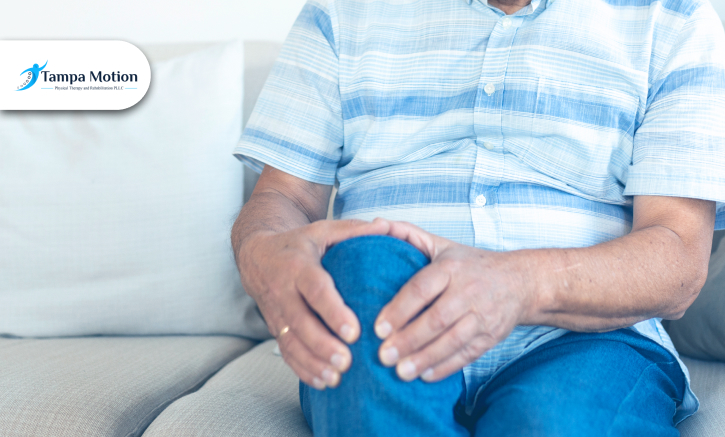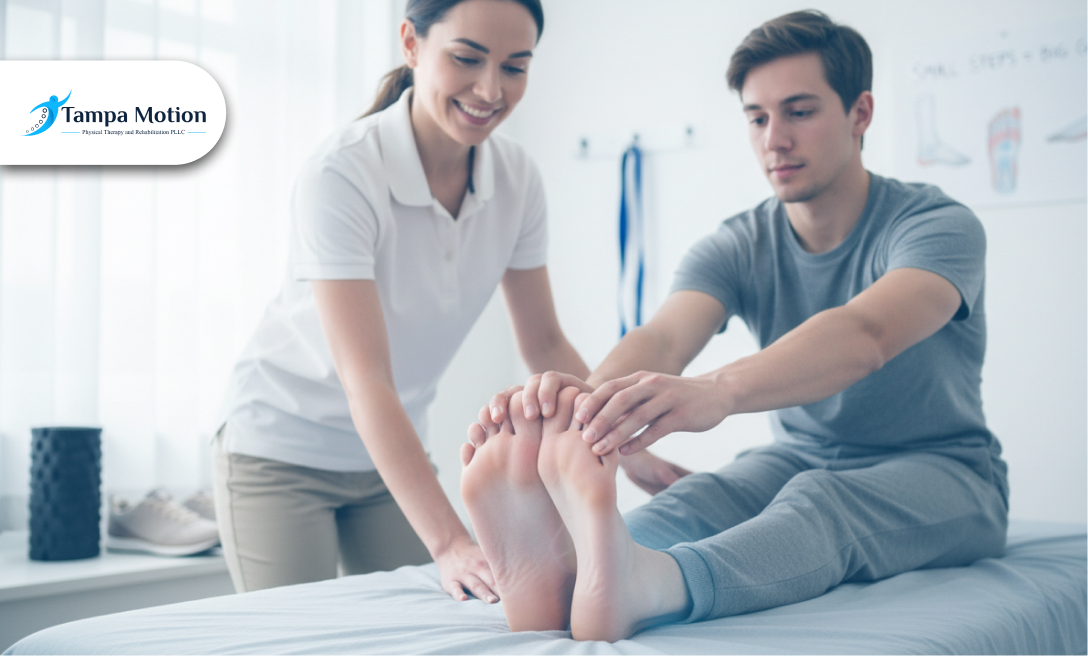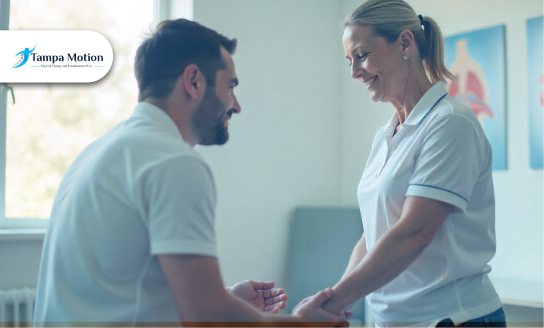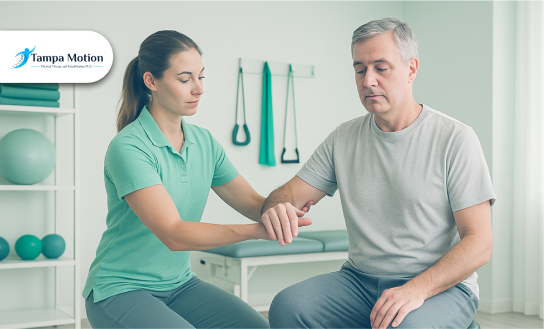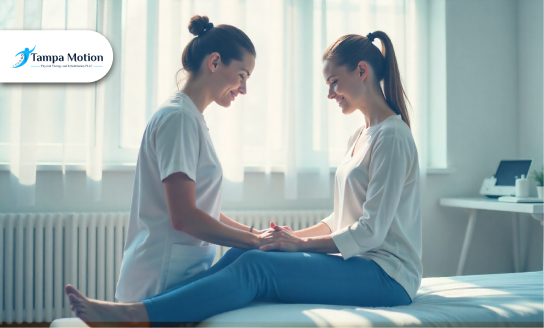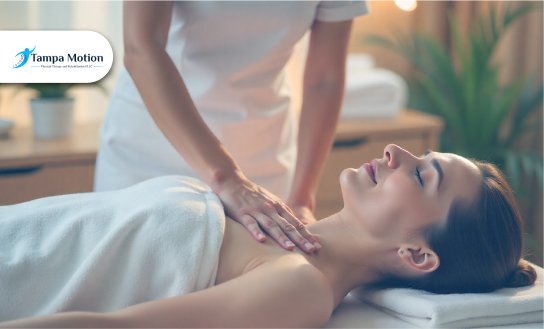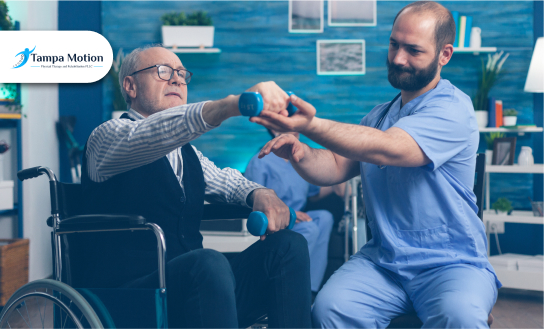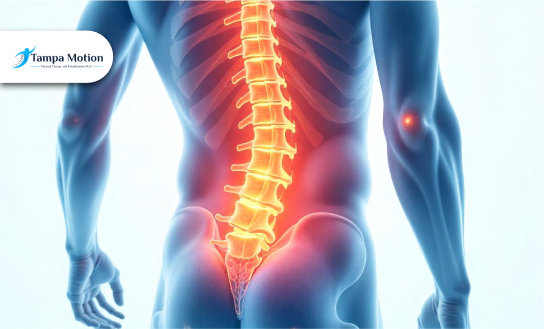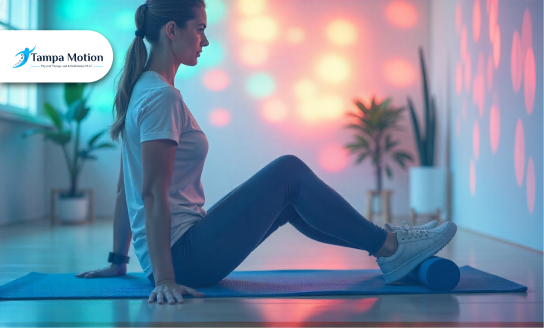
Top Balance Exercises for Seniors at Home
September 2, 2025
Top Balance Exercises for Seniors at Home
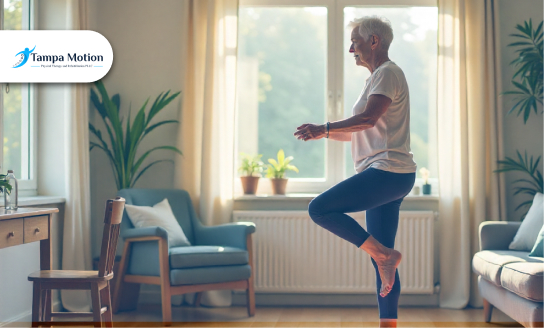
Nobody intends to fall. However, for many seniors, a simple trip or slip can result in much more than just a bruise.
According to the Centers for Disease Control and Prevention, one out of every four adults over 65 falls each year. Falls are not only common; they are the leading cause of injury-related deaths among older adults. Doesn't that sound scary? Good news is you can fight back with something as simple as a few minutes of exercise per day.
If you've been feeling a little unsteady lately or simply want to stay on your feet, this guide is for you. We'll go over a variety of simple, at-home balance exercises that don't require fancy equipment, gym memberships, or a personal trainer shouting in your ear.
1. Safety First: Before You Start
Let's take a quick pause before we begin these exercises. I know you're eager to get moving, which is great; however, your safety always comes first.
If you're dealing with any health issues like heart conditions, joint pain, dizziness, or anything that affects your balance (hello vertigo or neuropathy), it's a smart move to consult with your doctor or physical therapist first. They can assist you in tailoring your routine so that it actually benefits your body rather than straining it.
Now, let’s get your space ready. A few simple changes can significantly improve your confidence (and sense of safety) while exercising.
Supportive Shoes
There are no slippers, flip-flops, or bare feet allowed here. You'll need shoes with a strong grip and adequate ankle support. Consider walking shoes or footwear with a non-slip sole. It helps you stay grounded.
A Stable Chair or Countertop
Whether you're lifting a leg or simply practicing your posture, having something sturdy nearby to hold onto provides balance and peace of mind. Ensure that it does not wiggle or roll.
Clear Floor Space
Remove rugs, cords, and any other items that may interfere with your footing. Even the smallest corner of a mat can be deceptive.
Someone Nearby (Optional yet Helpful)
You do not need someone next to you; however, having a family member, caregiver, or neighbor present, especially the first few times, never hurts. Knowing that someone is present can help to calm nerves and increase confidence.
2. Standing Marches (Great for Beginners)
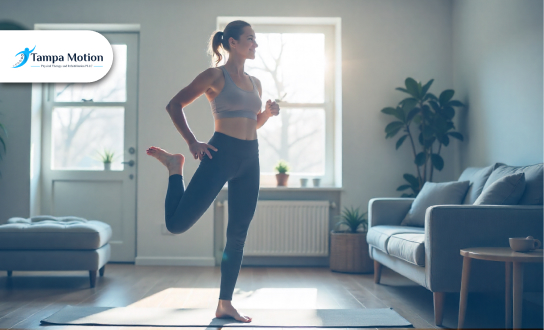
This one is as easy as it sounds and surprisingly effective. Standing marches are a gentle, low-impact way to wake up your muscles and ease into balance exercises, especially if you're just getting started.
How To Do It:
Stand tall behind a strong chair or counter. Rest your hands lightly on it to provide support. Now, lift one knee as if you were marching in place. Lower one knee, then lift the other. Aim to bring each knee up to about hip height, however, don't worry if that feels too much. Even a few inches off the ground is a good starting point.
Why Does It Help:
This movement engages your hip flexors, core muscles, and lower back, all of which contribute to balance and stability. It also improves coordination by allowing your brain and body to fall into a nice rhythm as you move.
According to the National Institute on Aging, exercises like these can improve your walking ability, lower your risk of falling, and even help with everyday tasks like climbing stairs or getting out of the shower.
How Many Repetitions Are There?
Begin with 10 repetitions for each leg. Please take your time; this is not a race. Prioritize control over speed.
3. Heel-to-Toe Walk (Balance + Focus)
This one may bring back childhood memories of walking a line or pretending to be in a circus, however now it's all about improving your balance and coordination.
How To Do It:
Standing tall, walk in a straight line with one foot directly in front of the other. With each step, your heel should come into contact with the toes of your opposite foot, as if you were walking on a tightrope (with significantly less pressure).
Move slowly. Keep your eyes forward, not on your feet. What if you feel unsteady? This is completely normal. Simply pause, restart, and keep going.
Why It Works:
This exercise is excellent for developing balance, focus, and lower body strength, particularly in the small stabilizer muscles around the ankles and knees. It also helps to improve coordination between your eyes, feet, and brain, which is something we all want to maintain as we get older.
The National Institutes of Health (NIH) says that doing exercises that involve both movement and mental focus (like walking and concentrating on form) can reduce fall risk by up to 33%.
Pro Tip: Add a Safety Net
If this is your first time doing it, or if your balance is off, walk along a hallway wall, kitchen counter, or anywhere you can lightly touch something for support. Even having a hand nearby can make a significant difference.
Begin with 5-10 steps, then rest and repeat. The key is to maintain consistency. It's completely fine if you wobble; every step is progress.
4. Single-Leg Stands (One of the Best)
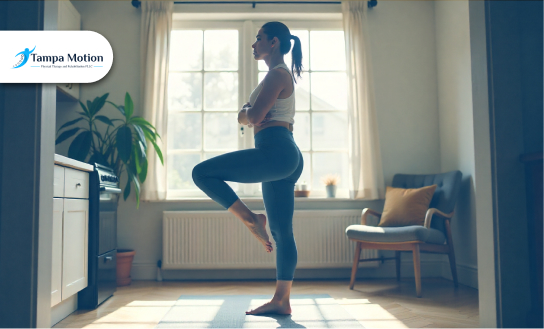
Single-leg stands are one of the most effective balance exercises you can do in under a minute.
How to Do It (Safely & Always):
Stand next to a sturdy counter or chair and gently grab hold for support. Then, raise one leg just a few inches above the ground.
Maintain an upright posture with your standing knee slightly bent (not locked). It is perfectly acceptable to rest your toe on the ground if your balance wobbles at first.
What Is the Goal?
Aim for 10 seconds on each leg, then switch. If that feels good, do it a few times on each side. As you gain confidence, try doing it without your hands or even while brushing your teeth.
Why It Is So Effective:
This simple movement has a significant impact. It strengthens your ankles, hips, and core, all of which contribute to your stability. It also helps your brain communicate more quickly and clearly with your muscles, resulting in faster reflexes and fewer stumbles.
A 2022 study published in the British Journal of Sports Medicine found that adults who could stand on one leg for at least 10 seconds had a significantly lower risk of premature death. 10 seconds of balance could lead to a longer, healthier life.
5. Chair Squats (For Leg Strength & Control)
Strong legs and solid control are essential for moving around your home, using the restroom safely, and getting in and out of bed. Chair squats are one of the most effective ways to build strength.
How to Do It:
Sit in a sturdy chair with your feet flat on the floor, about hip-width apart. Cross your arms over your chest or rest them in your lap, then slowly push through your heels to stand up. Once you are fully upright, slowly lower yourself back down while maintaining control.
Why It Helps:
Chair squats work the thighs, knees, glutes, and hips, basically all of the major muscles that help you walk, stand, and balance. They also improve eccentric control, or your ability to lower yourself without plopping down (which can be harmful to your joints).
According to the National Institute on Aging, exercises that target lower-body strength, such as squats, are critical for maintaining independence and lowering fall risk as we age.
How Many Should I Do?
Start with 2 sets of 10, resting for 30–60 seconds in between. If that feels like too much, start with 5 reps and build up over time.
6. Tai Chi-Inspired Moves (Balance with Grace)
If you've ever seen someone do Tai Chi, you'll notice something right away: it looks almost like dancing in slow motion. However, beneath those gentle movements lies a powerful practice that has helped people, particularly older adults, achieve balance, strength, and peace of mind for centuries.
What It Is:
Tai Chi consists of a series of slow, controlled movements that follow one another. It all comes down to balance, breath, posture, and focus. No jumping or straining, just gentle movement that feels good. Even a few minutes of Tai Chi-inspired moves per day can help:
Coordination
Core strength
Flexibility
Mental clarity
A study in the Journal of the American Geriatrics Society found that Tai Chi can reduce the risk of falls in older adults by 43%. That is nearly reducing your risk simply by moving slowly and deliberately.
Where to Start:
There are many beginner-friendly resources right at your fingertips:
YouTube channels offer free, guided sessions designed specifically for seniors.
Local senior centers and community centers often offer beginner Tai Chi or "movement for balance" classes.
If you're a total beginner, look for short 5–10 minute routines to get started. Even one flow per day is a great start.
7. Seated Exercises (For Days You’re Low on Energy)
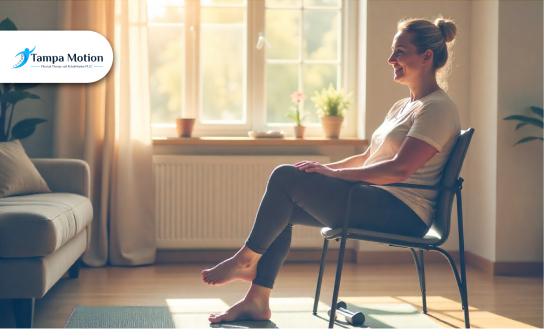
We all have days when we're just not feeling up to standing or moving around much, and that's perfectly fine. Whether you're recovering from an illness, dealing with joint pain, or simply tired, you can move your body in gentle, effective ways.
Movement does not have to involve sweating or standing on one leg. It can be as simple as sitting up straight in a chair and taking a few minutes to stretch and strengthen.
Try These Simple Seated Movements:
Ankle Rolls
Lift one foot off the floor slightly and slowly roll your ankle in circles, 5 in each direction. This keeps the joints mobile and improves circulation.Seated Marches
Sit upright and gently lift one knee at a time, like you’re marching in place. It wakes up your core and hip muscles without putting pressure on your joints.Arm Reaches
Extend your arms up, out to the sides, or across your body. You can even hold a light object (like a water bottle) for added resistance. Great for shoulder mobility and upper body strength.
These exercises are especially helpful for:
Seniors with limited mobility
Those recovering from surgery or illness
Anyone who just needs a gentler movement option that day
Build Better Balance Today with Help from Tampa Motion
We believe that balance is more than just standing tall; it is about living with confidence, security, and ease. Whether you're just starting to feel unsteady or recovering from a fall, our team is here to meet you where you are.
You do not have to go through this journey alone. We provide individualized balance assessments, guided home routines, and one-on-one physical therapy sessions. Our licensed therapists understand the unique needs of older adults and develop care plans that are gentle, practical, and results-driven. Call us or schedule your consultation online with Tampa Motion today.
Recent Blogs
